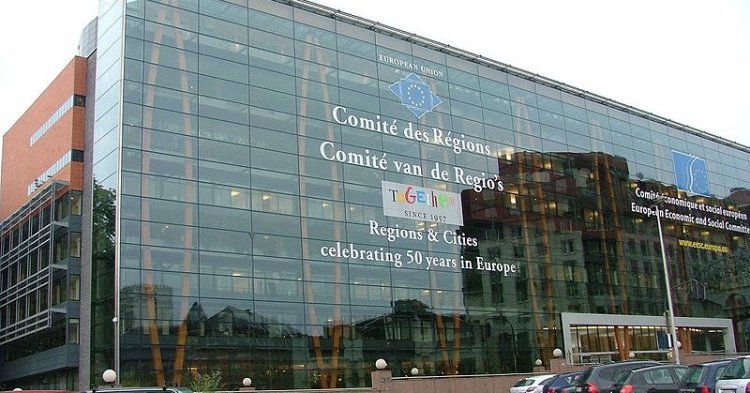One of the most challenging aspects of the ‘representation group’ deal, which aims to enhance civic inclusion, is quite linked to classic federalist theories. The fact that certain interest groups work through regionally structured offices, where decisions are taken through concerted dialogue, compared to others that usually opt for a top-down approach with collective bargaining within a national setting or through final European office approval process. Such ‘incompatible’ organisational and procedural concepts defy the intent of obtaining an agreeable package for harmonised approaches.
The challenges are likely to be greater than the answers offered. One participant stated his concern on the social or functional-occupational categories that were currently not or under-represented in Europe through the present civic platforms, yet are entitled to the same right to be included in the ‘interest’ pool.
A participant neatly pointed out that many peerage organisations appear to be haunted by a ‘disorienting’ leniency towards elitism.
Another participant neatly pointed out that many peerage organisations appear to be haunted by a ‘disorienting’ leniency towards elitism. In that respect, Pierre Barge, President of the European Association for the Defence of Human Rights, referred to a tough call between collective versus concentrated representation. He shared his impression that the Commission often finds itself ‘fishing’ out of a gigantic pool of representative civil society bodies, a field that seems to be flooded and opaque at the same time.
A jigsawed reality: looking for the share of the hidden good - doers
This closely links to the question of legitimacy and recognition from both the citizen base and official institutions towards the diffuse and ‘non-chartable’ activity range of representative civil platforms. Under what pretext do NGOs lay claim to their role, are they able to attest legitimacy for it and why is there so little recognition by official actors for their input? Questions like these underpin contextual problems, the issue of selecting a viable method to employ concerted governance without ‘running in different directions’ and finally the risk of rapid depletion of scarce resources for the ‘3rd sector’ in view of the ongoing processes of civil dialogue.
The voluntary service-based ‘third sector’ in this Nordic country covers around 200,000 organisations, employs over 2 million people and accounts for a 6 percent share of the Swedish GDP.
In Sweden for instance, the input of pan-national volunteer organisations and the force-catalysing process between such representative bodies which started in the 70s enabled them to gain an established vantage point to get government attention. The voluntary service-based ‘third sector’ in this Nordic country covers around 200,000 organisations, employs over 2 million people and accounts for a 6 percent share of the Swedish GDP, said Ariane Rodert, monitor for social developments in the EU, National Forum for Voluntary Social Work.
The Commission is currently the only institute giving a certain ‘push factor’ for a larger and more flexible framework to be adopted concerning structured civil inclusion/dialogue. The partners conveyed their regards to her about the challenges of making a joint directive neither too general, and neither too ‘pinned down’ in prefixed and over-compartmentalised (technical) requirements for structured citizenship-synergizing modes. Balancing the cooperation requirements is the preferred option, yet this precludes nightmare compromises and years of benchmarking it’s efficiency.
The Illusion of Inclusion or the Challenge to Adequately Encompass Volunteering in Europe
As long as the member states and European institutions work on separate speeds and with different paradigms of what the level of social inclusion ought to be, there is no chance for them to breakthrough or adequate systematic strategy for enhanced civil dialogue in the near future.
Viviane Reding, Vice-President of the Commission in charge of Justice, Fundamental Rights and Citizenship, therefore advised to take stock of the fragmented field and the contingencies that feed the barriers to reach out in civil society.
The detailed and cunning experience of Marian Harkin MEP, on inclusion of civil society, gave a few hints and a possible path in fleshing out the legal and inter-institutional prerequisites. She asked participants to find a method to persuade Commissioner Reding to toughen her stance. MEP Harkin had proposed earlier in March to tie the citizen inclusion issue in with the Commission’s intent to dub 2011 the ‘European Year on Volunteering’. To this end, she appealed the Commission to draft a comprehensive Green Paper on volunteering amongst civilians, to add recognition and value to current volunteers and incite more people to nourish public demand for active inclusion. The Commission however, does not see the time fit to compose a Green Paper for this purpose of adding recognition to volunteering, and questions that this is the best instrument to do so. The Commission prefers to wait until more complete data sets and trustworthy, comparable statistics offer a more coherent picture of the volunteering sector throughout Europe before giving further signals. The prospect is to enhance synergies with other relevant organisations such as Eurostat, the ILO and UN.
Another commentator from the audience launched the idea for a separate appointed Commissioner to deal solely with the matter of civil representation and civil inclusion.
Mrs. Harkin referred to the ECAS publication entitled ‘The Illusion of Inclusion: Access by NGOs to the structural Funds in the New Member States of Eastern and Central Europe’, which led her to subscribe to the need for a good communication strategy for all layers and in all directions, as well as calling for a deeper reflection about the meaning of civil consultation processes. Also, a commentator from the audience launched the idea for a separate appointed Commissioner to deal solely with the matter of civil representation and civil inclusion. Following on from this recommendation, similar delegates at the other European institutions could be appointed to harmonise methods and working models for this particular task.
Mario Sepi, President of the EESC, pointed out that a lot of factors of concern could be overcome if the EU figured out effective measures to level out unemployment and implement propelling ‘booster’ functions to the most needy niches of the dynamic labour market. He also referred to credit management oversight instruments and insurance policies to harness responsible investment practices. The bottom line of the imbroglio is that the advancement of solidarity remains trapped as long as the response amongst relevant actors remains uncoordinated and shifting at different speeds.


Follow the comments: |
|
